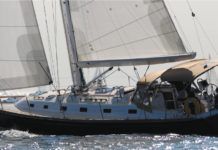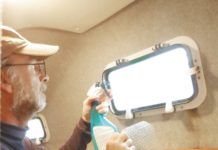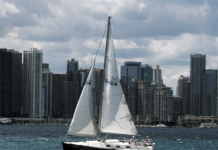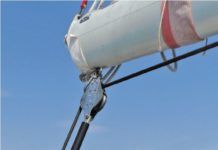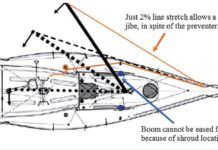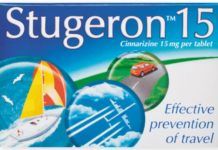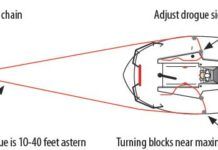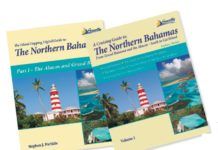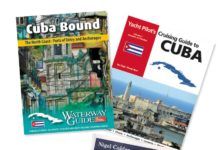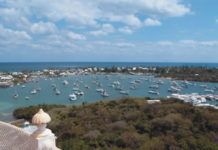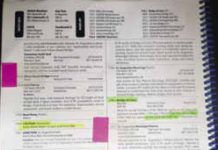Tools to Tame the Jibe
The loads of a flying jibe in late summer squall are enough to shred sails, rip out deck or boom fittings, bend or break the boom gooseneck, or even bend the boom itself. The novice sailor learns very quickly to be wary of an unintentional jibe.
The Best Prevention is a Preventer
Ideally, you don't put yourself in a position where an accidental jibe can happen, but even an experienced sailor can get caught off guard by sudden, violent wind shifts in mountainous coastal areas or in night-time squalls. The most common way to take the fright out of an unintentional jibe involves a preventer, something weve examined in a number of previous reports. Preventers are especially useful when sailing deep downwind in rolly conditions, when exaggerated yawing lets the wind sneak behind the mainsail.
Strategy to Fight Seasickness
Getting over seasickness as quickly as possible must be the focus and responsibility of all on board. Having dealt with 400 seasick sailors (out of 1,200 sail-training students) on ocean passages over the past 42 years, I have become very experienced at prevention and treatment. The following steps to avoid or lessen the severity of seasickness has served well over those years.
Ideal Drogue setup will require experiments
For maximum maneuverability, the control lines-one port, one starboard-should attach at the widest part of the boat. This maximizes leverage and places the effort close to the center pivot point. On a catamaran, closer to the transom works because of the wide beam, but for monohulls, attaching near the pivot point at the keel will be more responsive. For maximum responsiveness, the drogue should be as close to the transom as practical-this results in more responsive steering and minimal drag. We found the best compromise to be around 65-80 percent of the way aft, where there is still enough beam, but less risk of the control lines fouling.
Cruising Guides
Since our last review of cruising guides for the Atlantic Intracoastal Waterway and the Bahamas, weve come across a few more resources worth adding to the list, and one of our top-pick cruising and anchoring guides has ceased publication. Heres the latest on cruising guides and resources.
Resources for Cruising to Cuba
Although Cuba is terra incognita for many Americans, it has been a popular destination for Canadian and European cruisers for more than a decade. Here, we look at some resources for cruisers planning-or dreaming of-a cruise to Cuba.
Top Cruising Guides for the Bahamas
The Bahamas are often viewed as the Holy Grail of East Coast cruising due to their beauty and proximity to the Florida coast. Although they appear tantalizingly close (particularly when viewed on those nautical chart-themed placemats down at the Oyster Shack), make no mistake about it: A cruise to the Bahamas is an open-water passage that demands both attention to detail and proper safety precautions. Planning and executing a successful cruise to the Bahamas can be an extremely rewarding experience, one that provides ample opportunity to test preparedness of both boat and crew, while offering a reasonably do-able taste of bluewater cruising.
Entering and Exiting the Bahamas by Boat
When cruising the Bahamas, youll need three flags: a yellow quarantine flag, your home countrys flag, and a Bahamian courtesy flag. When nearing your port of entry, hoist the yellow quarantine flag and report to a Customs and Immigration facility as soon as possible after entering Bahamian waters.
Where to Steer, Eat, Anchor on the ICW
Most sailors find entering a new anchorage or harbor after a long day on the ICW an adventure. However exciting it may be, most of us also find that it carries a considerable amount of stress, particularly if entering in fading daylight or deteriorating weather. Not only do you have to contend with navigational issues, but there are other burning questions like wheres the best place to anchor; where can I get supplies or fuel; is tonight all you can eat ribs at Hawg Heaven Restaurant; or is there a dinghy dock nearby? To help you navigate all these questions and concerns-not to mention the unknown waterway-you need a good ICW guide that has all the facts, figures, and the right array of local knowledge.
Doin the Ditch, Frank style
The key to safe, stress-free ICW cruising (or less-stress at least) is proper planning. Get the most up-to-date ICW guidebooks and charts, and study them well in advance. When planning the field-test trip down the ICW for this article, PS tester Capt. Frank Lanier came up with a general timeline and lists of major stops he wanted to make along the way, but he let his day-to-day progress drive his schedule. He always planned out the next days run prior to heading out (typically the night before), which also gave him a chance to review the latest weather forecasts and its potential effect on travel plans.











